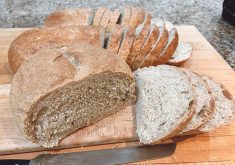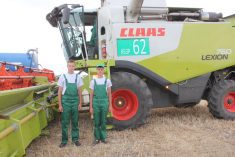Many small-town Manitobans have had a “perogy lady” in their lives.
For me, it was a perogy couple.
They were older, of Ukrainian heritage, and had a deal with my dad. He would trade half a deer’s worth of venison for butchering services. Sometimes the meat would come back with perogies, and those were the best. Far better than the ones Mom bought at the grocery store.
Read Also

Roundup retraction makes public trust ripples
A foundational study on glyphosate safety was recently retracted, while Roundup maker Bayer has already said it may ditch the key agricultural herbicide after lawsuits piled up.
Strictly speaking, those transactions went against provincial regulation, as did most small-town perogy sales, which tended to come out of uninspected home kitchens or church basements. Sellers were generally women who harnessed their home cooking skills to make a bit of extra money for their family or raise money for their community.
As an underground and small-scale industry, it wasn’t easy for food history researchers at the University of Winnipeg to track down their stories. Local newspapers are light on names, using phrases like “Hadashville’s perogy lady” or “Marchand’s perogy lady.”
The occasional classified ad might mention sellers of perogies and holubchi (also spelt as holubtsi or golubchi, but any way you spell it, it’s cabbage rolls).
The researchers were collecting stories as part of the university’s Manitoba Food History Project, an initiative that has now yielded a book entitled, mmm… Manitoba.
The book uses perogies to tell the story of Ukrainian immigrants and their traditions, and to illustrate Manitoba’s long history of grey market “cottage food” and its clash with food safety regulations.
To collect the stories, researchers Janis Thiessen and Kimberley Moore took an unusual tack. In 2018, they hit the road in a converted food truck. They travelled to different areas and invited people onto the truck to cook and talk about food and food production in their home and community.
Full disclosure: I was one of those people. My mom and I cooked chicken noodle soup and talked about raising and butchering chickens, hogs and cattle for our family’s meat needs each year.
The food truck was parked when COVID-19 rolled in, but not before the team recorded dozens of interviews to be archived as oral histories and produced a podcast of food stories called Preserves.
The book weaves together many of the stories they heard, ranging from the old-fashioned kitsch of Winnipeg’s Ichiban and the history of Japanese food on the Prairies to barbecue and its ties to Black and Filipino culture and the idea of “masculine” food.
Other bits talk about manomin (wild rice) and Indigenous agriculture before and after colonization.
The book’s tone sometimes borders on academic and chewy, but between stories and interview snippets, Moore and Thiessen also weave in recipes: instructions for kjielkje and schmauntfat (Mennonite noodles and cream sauce), beet leaf holubchi, chicken adobo (Filipino marinated chicken) and snow goose tidbits.
Manitobans will recognize many featured foods as icons of local cuisine, but the definition of what makes up “Manitoban food” remains elusive. In fact, Thiessen and Moore concluded that it’s neither possible nor useful to define Manitoban cuisine.
They quote folklorist Doreen Klassen who, while visiting a Mennonite colony in Mexico, asked a resident if the beans and tortillas they were eating were “Mennonite food.”
“’Yes,’ she was told. ‘We eat this all the time, and we are Mennonites.’”
The Manitoban population isn’t a monolith, and neither is its cuisine. The ‘fat boy’ hamburger is apparently a Winnipeg fixture. I’ve never had one.
Food evolves to fit a time and place, making it difficult to pin down “authentic” local cuisine. For instance, vinarterta, an Icelandic cake layered with prunes, continues to be treasured by Icelandic Manitobans, but it’s fallen out of favour in Iceland itselt, Thiessen told the Co-operator.
By trying to fit food into a box labeled Manitoban cuisine, “what we’re trying to do is freeze a portion of time and treat that as normative,” Thiessen said. “The act of putting things in a box, it’s not a useful activity other than to separate ourselves from other people.”
Instead, delving into stories of food made and eaten in the province can offer a new vantage on the big questions of history and help pose new questions about what it means to be Manitoban.
















